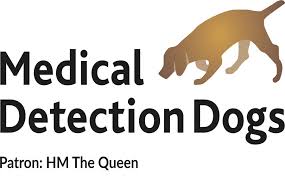What You Can Donate to Charity Shops
Charity shops play a vital role in UK communities. They raise millions of pounds each year to fund research, support vulnerable people, and protect the environment.
Donating items you no longer need is a simple way to help — but not everything can be accepted. Giving unsuitable items can actually cost charities money, as they may need to pay to dispose of them.
This guide covers what you can and can’t donate, how to prepare your items, and tips to make sure your contributions have the biggest possible impact.
Why It’s Important to Donate Wisely
When you donate quality, saleable goods:
- Charities raise more money for their cause.
- Items stay out of landfill, reducing waste.
- Shop volunteers save time sorting through unsuitable items.
Poor-quality or prohibited donations, on the other hand:
- Cost charities money to dispose of safely.
- Take up valuable time and storage space.
- Can even pose health and safety risks.
Items Most Charity Shops Accept
Most high street charity shops welcome the following, provided they are clean, safe, and in good condition:
👕 Clothing and Accessories
- Everyday clothing, shoes, handbags, belts, and scarves.
- Special items like wedding dresses and formal wear.
- Seasonal items such as coats or sports kit.
Tip: Wash clothes before donating and check for stains or damage. Pair shoes and secure with a band or string.
📚 Books, Media, and Entertainment
- Books of all genres.
- CDs, DVDs, vinyl records, and video games.
- Toys and puzzles (complete sets only).
🏠 Homeware and Small Household Items
- Kitchenware, crockery, and cutlery.
- Ornaments and decorative pieces.
- Small electricals such as lamps or toasters (PAT testing may be required depending on the shop).
🪑 Furniture and Larger Items
Some charity shops — like British Heart Foundation, Sue Ryder, and Emmaus — specialise in furniture.
For a complete guide and list of charities that offer free pick-ups, check out our Charity Furniture Collection article.
Items Most Charity Shops Can’t Accept
Certain items are unsuitable due to safety, hygiene, or legal reasons. Always check with your local shop before donating.
❌ Safety Equipment
- Baby car seats and carriers.
- Helmets (cycling, climbing, horse riding).
- Life jackets.
❌ Unsaleable or Damaged Items
- Broken electronics.
- Stained mattresses or upholstered furniture without fire safety labels.
- Ripped or heavily worn clothing.
❌ Hazardous Items
- Knives or sharp tools.
- Cleaning products or chemicals.
- Medical equipment like crutches or wheelchairs (unless explicitly accepted).
How to Prepare Your Donations
Make it easy for shop staff and volunteers by preparing your items carefully:
- Clean everything thoroughly — clothes, toys, and homeware.
- Bundle items together — like puzzle pieces or paired shoes.
- Label bags and boxes for faster sorting.
- Contact the shop ahead of time for large donations.
Pro Tip: If donating furniture, take clear photos and check whether the shop offers free collection before transporting heavy items yourself.
Where Your Donations Go
Every sale in a charity shop helps fund vital work.
Examples:
- Cancer Research UK: Funds life-saving cancer research.
- British Heart Foundation: Supports heart disease prevention and treatment.
- Oxfam: Fights poverty and provides disaster relief.
- RSPCA: Protects animals and promotes welfare across the UK.
Even a small bag of donated clothes can generate tens of pounds in sales, making a real difference to people, communities, and causes.
Conclusion
Donating to charity shops is one of the easiest ways to give back while decluttering your home.
By donating the right items in good condition, you ensure your contributions truly help the causes you care about.
Before heading out, check with your local shop for specific guidelines — and remember, when in doubt, ask first!
Published: 23 September 2025
Updated: 23 September 2025








